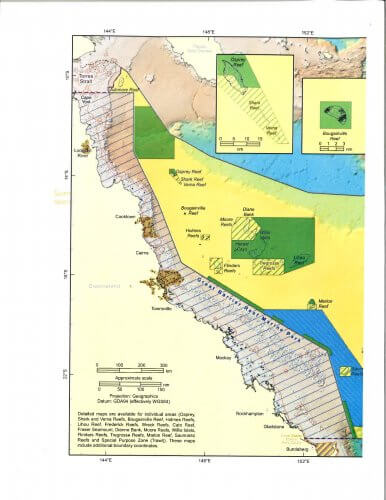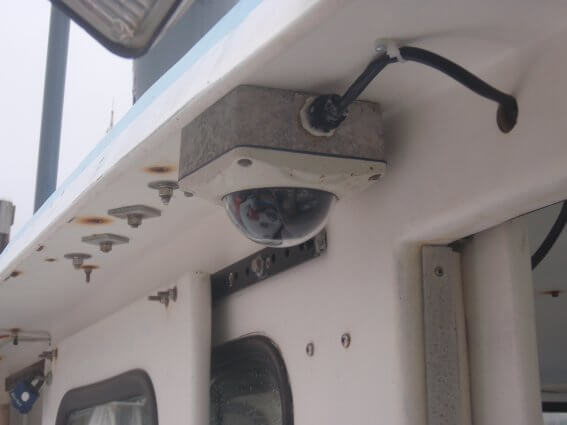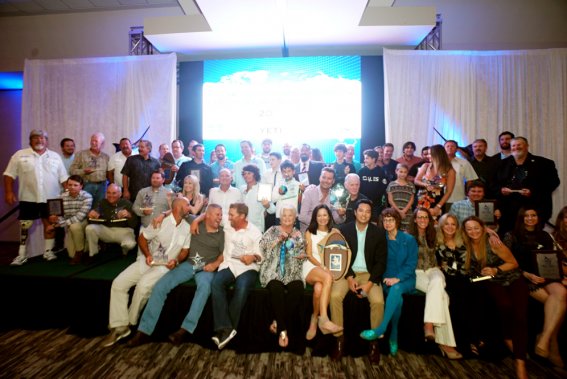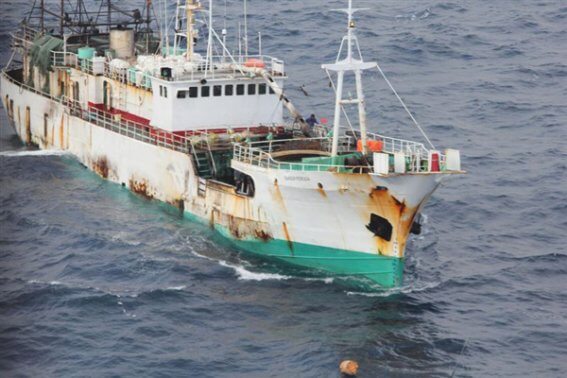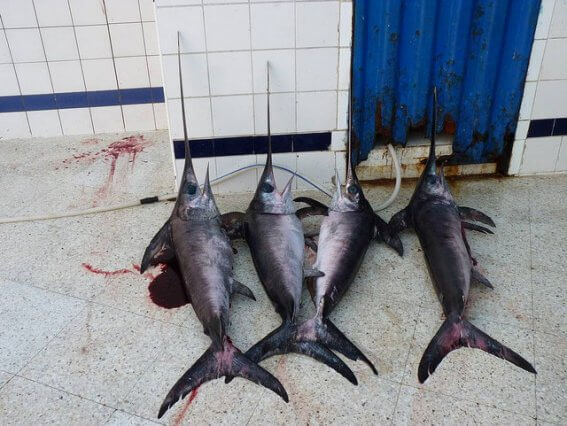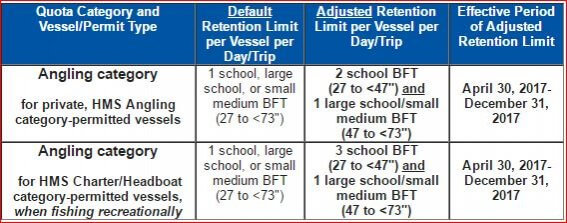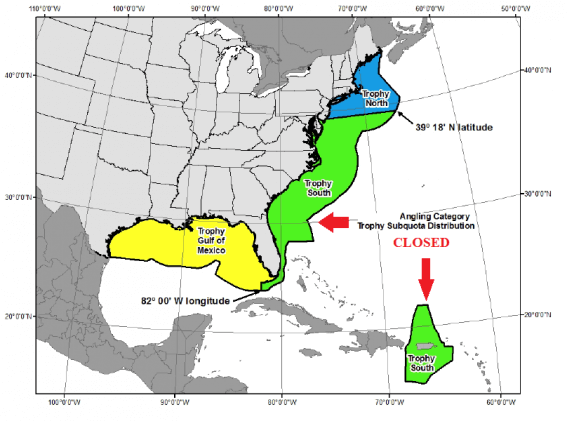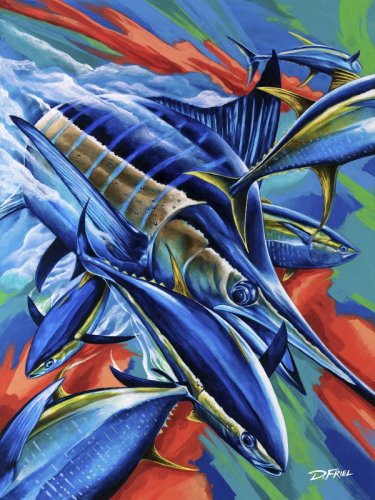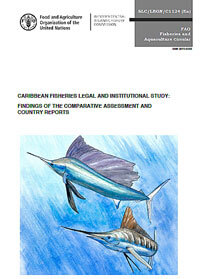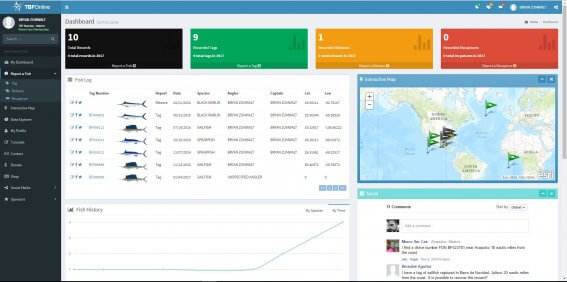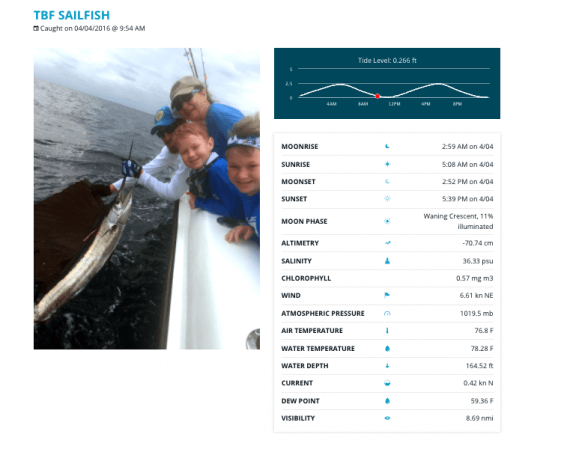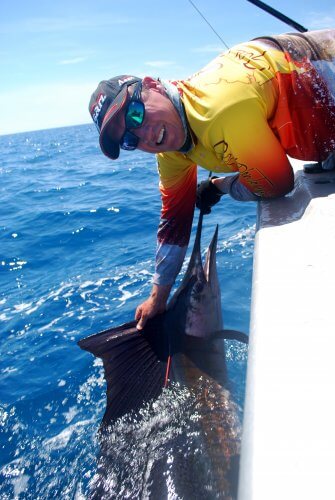
The Billfish Foundation’s (TBF) Tag and Release Award winners, the “who’s who” in the billfishing world will be honored during the International Tag and Release Awards Ceremony at Miami’s Jungle Island on February 17, 2017. Earning one of the prestigious awards, produced and donated by King Sailfish Mounts, symbolizes a year of hard work, great fishing and/or boat and fish handling skills plus a commitment to a future with billfishing. Leaders in the sportfishing industry sponsor the Tag and Release Program and Ceremony and include Costa Sunglasses, PELAGIC Gear, Casa Vieja Lodge, Garmin Inc., YETI Coolers, Marina Casa de Campo, International Game Fish Tournament Observers Inc., Makaira Adventures, Sailfish Brewing Company, and 20echo.
Youth Division
TOP TAGGING
Ages 8 & Under
Darren Philipps – Guatemala City, Guatemala
Runner-Up: Charles Gaddy – Manteo, NC USA
Ages 11-12
Hefner Appling – Port Aransas, TX USA
Runner-Up: Aidan Burke – Los Angeles, CA USA
Ages 13-15
Kaleb Richardson – Lafayette, LA USA
Runner-Up: Jamyn Kirkland – Englewood, FL USA
Ages 16-17
Toby Mason – Dampier, WA Australia
Runner-Up: Nuno Abohbot Jr. – Luanda, Angola
TOP RELEASE
Ages 8 & Under
Darren Philipps – Guatemala City, Guatemala
Runner-Up: Brown Gaddy – Manteo, NC USA
Ages 9-10
Elise Standing – Virginia Beach, VA USA
Ages 11-12
Ian Perez – Santo Domingo, Dominican Republic
Runner-Up: Cameron Johnson – Davie, FL USA
Ages 13-15
Caetlin O’Brien – Duxbury, MA USA
Runner-Up: Ethan Standing – Virginia Beach, VA
Ages 16-17
Toby Mason – Dampier, WA Australia
Runner-Up: Rory Brown – Mount Pleasant, SC USA
Gulf of Mexico Marlin Tagging Competition
Top Overall Tagging Angler – Richardson – Lafayette, LA USA
Top Overall Tagging Captain – Myles Colley – Pensacola, FL USA
Top Tagging Angler – Blue Marlin – Dana Foster – Pensacola, FL USA
Top Tagging Angler – White Marlin – Kaleb Richardson – Lafayette, LA USA
Top Tagging Captain – Blue Marlin – Myles Colley – Pensacola, FL USA
Top Tagging Captain – White Marlin – Chris Mowad – Pensacola, FL USA
Top Tagging Junior Angler – Kaleb Richardson – Lafayette, LA USA
Top Tagging Lady Angler – Lisa Foster – Pensacola, FL USA
Top Tagging Boat – Born2Run – Pensacola, FL USA
South Florida Sailfish Circuit
Top Release Angler – Jacob Lepera – Boynton Beach, FL USA
Top Release Captain, Private – Doug Covin – Miami, FL USA
Top Release Captain, Charter – Dean Panos – Pembroke Pines, FL USA
Top Release Junior Angler – Shawn MacMullin – Key Largo FL USA
Top Release Lady Angler – CeCe Imbrie – Naples, FL USA
Top Tagging Angler – Shawn MacMullin – Key Largo FL USA
Top Tagging Captain Private – Doug Covin – Miami, FL USA
Top Tagging Captain Charter – Bouncer Smith – Miami, FL USA
Top Tagging Junior Angler – Shawn MacMullin – Key Largo FL USA
Top Tagging Lady Angler – Dawn Samuels – Palm Beach Gardens, FL USA
Cape Verde Regional Tag & Release Competition
Top Tagging Angler – Paul Gerlach – Hobe Sound, FL USA
Top Tagging Captain, Private – Bertrand Bouchard – Port Gentil, Gabon
Top Tagging Captain, Charter – Martin Bates – Auckland New Zealand
Top Release Angler – Arthur Choate – Miami, FL USA
Top Release Captain, Private – Randy Hodgekiss – Orange Beach, AL USA
Top Release Captain, Charter – Zak Conde – San Vicente, Cape Verde
Top Release Junior Angler – Cameron Johnson – Davie, FL USA
Top Release Lady Angler – Amanda Cofer – Carolina Beach, NC USA
Hawaii Regional Tag & Release Competition
Top Tagging Angler – Jada Holt – Kailua-Kona, HI USA
Top Tagging Captain – Gene Vander Hoek – Kailua-Kona, HI USA
Top Tagging Lady Angler – Jada Holt – Kailua-Kona, HI USA
Top Release Angler – Paul Dolinoy – Huntington Beach, CA USA
Top Release Captain – Chris Choy – Kailua-Kona, HI USA
Top Tagging Anglers – Atlantic Ocean
Blue Marlin – Kaleb Richardson – Lafayette, LA USA
Sailfish – Marco Couto – Luanda, Angola
Swordfish – Richard Gudoian – Key Largo, FL USA
White Marlin – Laurent Sahyoun – Mandelieu, France
Top Tagging Anglers – Indian Ocean
Black Marlin – Scott MacGowan – Baynton, Australia
Blue Marlin – Scott MacGowan – Baynton, Australia
Sailfish – Henry Riggs-Miller – Victoria, Seychelles
Top Tagging Anglers – Pacific Ocean
Black Marlin – Stephan Kreupl – Oberursel, Germany
Blue Marlin – Christian Hampl – Doral, FL USA
Sailfish – Chris Jessen – Sarasota, FL USA
Spearfish – Julie Crispin – Sewall’s Point, FL USA
Striped Marlin – Kristen Richardson – Baton Rouge, LA USA
Top Tagging Captains – Atlantic Ocean
Blue Marlin – Martin Bates – Auckland, New Zealand
Sailfish – Fin Gaddy – Manteo, NC USA
Swordfish – Nick Stancyzk – Islamorada, FL USA
White Marlin – Christian Benazeth – Auch, France
Top Tagging Captains – Indian Ocean
Black Marlin – Eddy Lawler – Exmouth, WA Australia
Blue Marlin – Eddy Lawler – Exmouth, WA Australia
Sailfish – Terrence Farrell – Alyangula, NT Australia
Striped Marlin – Eddy Lawler – Exmouth, WA Australia
Regional Tag & Release Competition
Black Marlin – Tim Richardson – Bangalow, NSW Australia
Blue Marlin – Bobby McGuinness – Golfito, Costa Rica
Sailfish – Ben Horning – Jupiter, FL USA
Spearfish – Gene Vander Hoek – Kailua-Kona, HI USA
Striped Marlin – Wilks Hammock – Pensacola, FL USA
Top Release Anglers – Atlantic Ocean
Blue Marlin – Mike Brauser – Lighthouse Point, FL USA
Sailfish – T. David Lohr – Rockville, VA USA
Spearfish – Gray Ingram – Jupiter, FL USA
White Marlin – Laurent Sahyoun – Mandelieu, France
Top Release Anglers – Indian Ocean
Black Marlin – Riley Smith – Exmouth, WA Australia
Top Release Anglers – Pacific Ocean
Black Marlin – Barry Alty – Gold Coast, QLD Australia
Blue Marlin – Chris Jessen – Sarasota, FL USA
Sailfish – Jack Duvall – Kemah, TX USA
Striped Marlin – Jack Duvall – Kemah, TX USA
Top Release Captains – Atlantic Ocean
Blue Marlin – Zak Conde – San Vicente, Cape Verde
Sailfish – Fin Gaddy – Manteo, NC USA
Spearfish – Ronnie Fields – Lake Park, FL USA
White Marlin – Christian Benazeth – Auch, France
Top Release Captains – Indian Ocean
Black Marlin – Eddy Lawler – Exmouth, WA Australia
Blue Marlin – Eddy Lawler – Exmouth, WA Australia
Sailfish – Eddy Lawler – Exmouth, WA Australia
Top Release Captains – Pacific Ocean
Black Marlin – Brett Alty – Gold Coast, QLD Australia
Blue Marlin – Ben Horning – Jupiter, FL USA
Sailfish – Brad Philipps, Guatemala City, Guatemala
Striped Marlin – Benito Agundez – San Ysidro, CA USA
Overall Tagging Winners
Top Overall Tagging Angler – Chris Jessen – Sarasota, FL USA
Top Overall Lady Tagging Angler – Laura Jessen – Sarasota, FL USA
Top Overall Youth Tagging Angler – Kaleb Richardson – Lafayette, LA USA
Top Overall Tagging Captain – Ben Horning – Jupiter, FL USA
Overall Release Winners
Top Overall Release Angler – Chris Jessen – Sarasota, FL USA
Top Overall Release Lady Angler – Lisa Everett – Nags Head, NC USA
Top Overall Release Youth Angler – Darren Philipps – Guatemala City, Guatemala
Top Overall Release Captain – Brad Philipps – Guatemala City, Guatemala
The post 2016 Tag & Release Competition Winners appeared first on The Billfish Foundation.
